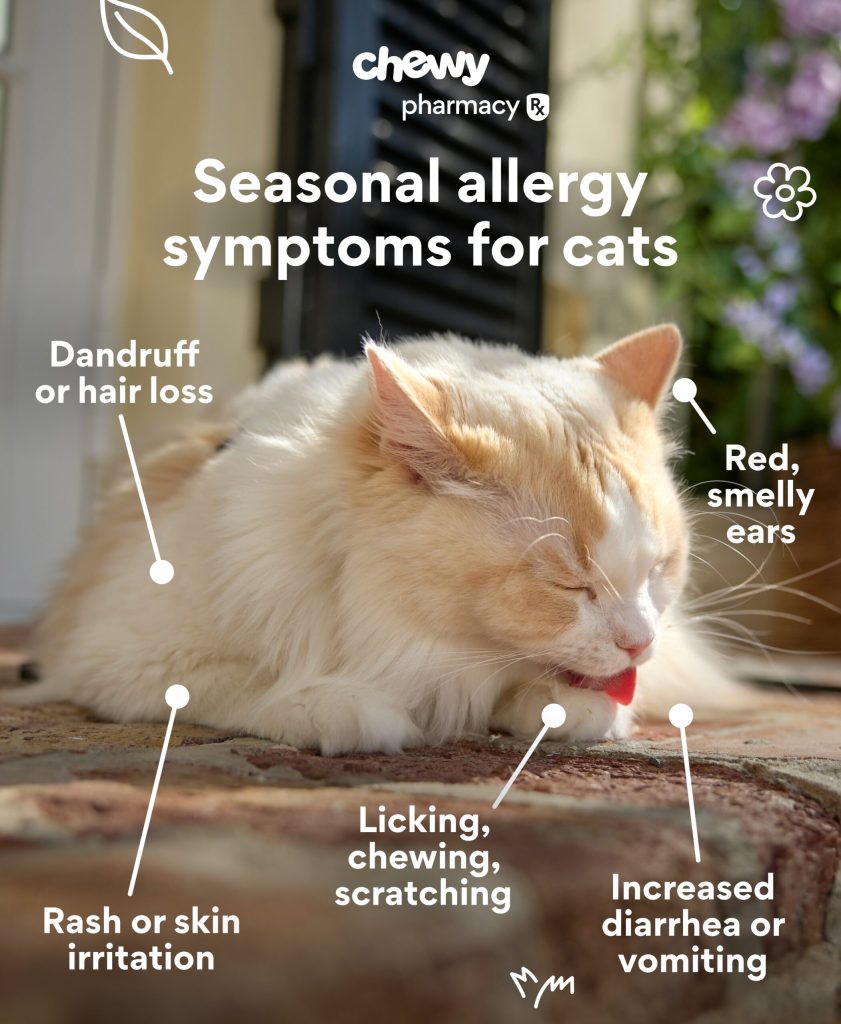How to Identify and Treat Food Allergies in Pets

Understanding Food Allergies in Pets
Living with a pet means embracing the joys of companionship, but it can also entail navigating the complexities of their health. One of the often-overlooked issues is the potential for food allergies. Just like humans, pets can develop sensitivities to certain ingredients in their diet, which can lead to significant health concerns if not addressed early on.
The symptoms of food allergies can manifest in ways that are not immediately connected to diet. Many pet owners might notice their furry friends scratching incessantly, particularly around their skin or paws, leading to a cycle of discomfort. This itchy sensation can often be linked to an allergic reaction, rather than external parasites like fleas. Additionally, chronic ear infections are another telling sign; pets struggling with food allergens may frequently shake their heads or scratch at their ears due to discomfort.
Gastrointestinal issues can further complicate the picture. Pets suffering from food allergies may experience recurrent vomiting or diarrhea, which not only affects their overall quality of life but can also lead to more serious health complications if left unchecked.
Common Allergenic Ingredients
Many pet owners are surprised to learn that common ingredients can trigger allergies in their pets. The most frequently identified allergens include:
- Beef: A prevalent protein source in many dog foods, beef can be a significant allergen.
- Dairy: While not all pets are lactose intolerant, some may develop allergies to dairy products.
- Chicken: Similar to beef, chicken is an ingredient in numerous pet foods and can cause reactions in sensitive animals.
- Fish: Though often considered a hypoallergenic protein, some pets still react to different fish varieties.
- Grains: Ingredients such as wheat and corn are common in many commercial pet foods and can lead to allergic responses.
Recognizing these signs of allergies is the first crucial step toward ensuring your pet’s health. If you suspect your pet might be reacting to their food, consulting with a veterinarian is essential. They can conduct thorough tests, such as elimination diets or allergy testing, to pinpoint the exact source of discomfort.

Managing Food Allergies
Understanding food allergies is just the beginning. Once diagnosed, there are various treatment options that can be employed to improve your pet’s quality of life. This may include switching to a special diet composed of novel proteins and carbohydrates that your pet has never eaten before, reducing exposure to allergens, and possibly introducing medications to manage symptoms.
Moreover, it is vital to remain vigilant regarding your pet’s reactions to any dietary changes. Keeping a detailed diary of your pet’s food intake and symptoms can provide invaluable information to your veterinarian, helping tailor a treatment plan that effectively addresses your pet’s specific needs.
In conclusion, understanding how to manage food allergies not only alleviates discomfort for your pet but can also significantly enhance their overall health. By being attentive and proactive, you can ensure a happier, more comfortable life for your furry companion.
LEARN MORE: Click here for natural solutions
Identifying Food Allergies in Your Pet
Understanding food allergies in pets begins with observation. Pet owners often play a crucial role in identifying the symptoms that indicate potential food allergies. While some signs may be subtle, recognizing these early warnings can significantly enhance your pet’s well-being and lead to timely intervention.
One of the most common indications of food allergies is chronic itching or skin irritation. Pets may exhibit behaviors such as scratching, biting at their fur, or rubbing against furniture in an attempt to alleviate their discomfort. This excessive scratching can lead to skin infections, creating a vicious cycle of allergy and irritation. To help pinpoint the origins of the issue, keep an eye on your pet’s daily habits. Is the itching localized to a particular area, or widespread across their body?
Another area to monitor closely is your pet’s ears. Frequent head shaking, ear scratching, or a predisposition to ear infections can often be linked to food allergies. If your pet seems to suffer from recurrent ear inflammation, it could signify that they are reacting to something in their diet.
Gastrointestinal symptoms are also vital indicators of food allergies. Pets may experience symptoms such as:
- Recurrent vomiting: Occasional vomiting is normal, but if your pet is frequently throwing up after meals, it could indicate an allergic response.
- Diarrhea: Loose stools or diarrhea that persists over several days should not be ignored, as they often correlate with food intolerances.
- Flatulence: Excessive gas can also signal that your pet is having trouble digesting their food.
When trying to identify food allergies, it is essential to consider the complete picture. Keep a food diary that tracks your pet’s diet together with any symptoms that arise. Noting the specific brand, flavor, or type of food and its correlation to any changes in your pet’s behavior can provide invaluable insights for your vet.
While some food allergies can develop at any stage of a pet’s life, young pets may also display sensitivities as their immune system develops. If they are suddenly exhibiting symptoms after being on a particular diet for a while, it could be that their bodies have developed an intolerance to those food ingredients over time.
Ultimately, if you suspect your pet is suffering from food allergies, consulting with a veterinarian is essential. They can provide tailored guidance, including the possibility of conducting an elimination diet or allergy testing to identify the underlying cause. Early and accurate identification of food allergies can make all the difference in your pet’s quality of life.
| Identification Techniques | Treatment Options |
|---|---|
| Elimination Diets | Veterinary Formulated Foods |
| Documenting Symptoms | Allergy Shots |
| Skin Tests | Medications |
Identifying food allergies in pets is crucial for their well-being. One effective method is using elimination diets, where specific ingredients are removed to pinpoint allergens. Careful documentation of symptoms, including itching or gastrointestinal issues, helps correlate food intake with reactions. For more rigorous assessment, skin tests performed by veterinarians can identify specific allergens at play.Once identified, treatment options can significantly improve your pet’s quality of life. Transitioning to veterinary formulated foods that exclude allergens is often recommended. Additionally, allergy shots, which work by desensitizing pets to allergens, can lead to long-term relief. Lastly, your veterinarian may prescribe medications to alleviate symptoms and enhance comfort, underscoring the importance of professional guidance in managing food allergies in pets. Exploring these avenues offers hope for pet owners seeking to create a healthier and happier environment for their furry companions.
DISCOVER MORE: Click here for effective training tips
Effective Treatment Options for Food Allergies in Pets
Once food allergies in your pet have been identified, the next critical step is exploring treatment options to alleviate their discomfort and improve their quality of life. Treatment primarily revolves around managing the diet and ensuring your furry friend is not exposed to allergens that could trigger their symptoms.
The cornerstone of managing food allergies is the elimination diet. This process involves removing the suspected allergens from your pet’s diet entirely. To initiate an elimination diet, you’ll want to work closely with your veterinarian, who can help determine the safest and most effective way to transition your pet onto a new dietary plan. Typically, a hypoallergenic diet containing novel protein sources, such as duck or venison, and limited carbohydrate options will be recommended. This allows you to monitor your pet’s response to certain ingredients systematically.
Duration is key during this phase, as it usually requires about 8 to 12 weeks for the allergens to clear from the pet’s system and for noticeable changes to occur. Regular monitoring and documentation of symptoms during this period can provide insights into your pet’s reactions, allowing you to create a clearer picture of what ingredients may be causing the allergies.
If the symptoms improve during the elimination diet, reintroduction of foods can begin. This process entails gradually adding one new ingredient back into your pet’s diet every few weeks to see if any allergic reactions surface. This meticulous approach can lead to a full understanding of your pet’s specific triggers.
In some cases, your veterinarian may recommend implementing antihistamines or corticosteroids for temporary relief from symptoms such as itching or inflammation, especially during the initial stages of treatment. It is, however, crucial to avoid self-medicating your pet, as improper dosages could lead to serious complications.
Another approach includes utilizing probiotics to support gut health, which can be beneficial, especially if gastrointestinal symptoms are prominent. Probiotics help restore the balance of beneficial bacteria in a pet’s digestive system and may enhance their ability to tolerate certain foods over time.
Beyond dietary management and medications, environmental factors should not be overlooked. Exposure to potential allergens such as pollen, dust mites, or molds can exacerbate your pet’s symptoms. Implementing cleaning routines, maintaining a dust-free environment, and ensuring frequent baths can help minimize these irritants.
In the long term, the goal is to establish a balanced and satisfying diet that not only fits your pet’s nutritional needs but also eliminates or reduces the risk of allergic reactions. This may involve selecting specialized pet foods formulated to be free from commonly associated allergens such as wheat, corn, soy, or specific proteins.
Persistent and attentive observation plays a pivotal role throughout this journey. Engaging with your veterinarian for regular check-ups and updates is crucial to altering treatment plans if symptoms persist. Additionally, you can educate yourself on ingredient labels, becoming adept at reading pet food nutritional information to avoid triggers in the future.
Ultimately, managing food allergies is a holistic process that requires patience, consistency, and communication with your veterinarian. Each pet is unique, and what works for one may not work for another. However, with diligent effort and the right strategies, it is entirely possible for your furry companion to enjoy a happy and healthy life despite food allergies.
DISCOVER MORE: Click here to learn about the benefits of a balanced diet for your pet
Conclusion
Identifying and treating food allergies in pets is a multifaceted journey that involves careful observation, thorough dietary management, and ongoing communication with your veterinarian. As the prevalence of food allergies among pets rises, understanding how to navigate this challenge becomes essential for every pet owner. The first step in safeguarding your pet’s health is vigilantly observing symptoms and documenting these instances for your veterinarian’s assessment. This collaborative approach allows for tailored treatment plans that prioritize your pet’s unique needs.
Utilizing an elimination diet is not just a temporary measure but a vital tool in discerning allergens, and its importance cannot be overstated. By guiding this process under veterinary supervision, you ensure that your pet receives appropriate nutrition while systematically identifying potential triggers. Complementing this with targeted treatments such as antihistamines and probiotics can alleviate symptoms effectively, promoting a better quality of life.
It is equally important to acknowledge the environmental factors that could exacerbate your pet’s allergies. Maintaining a clean living space and adopting effective anti-allergen strategies will fortify your pet’s health alongside dietary changes. Ultimately, the goal is to create a balanced and nourishing diet that minimizes allergic reactions while fulfilling your pet’s nutritional requirements.
In conclusion, the path to understanding and managing food allergies in pets requires patience, persistence, and proactive engagement. Each pet is unique, and a personalized strategy can lead to a more joyful and healthy life. As you embark on this journey, remember that the well-being of your furry companion is both an art and a science, one that can empower not just your pet but your bond with them.


